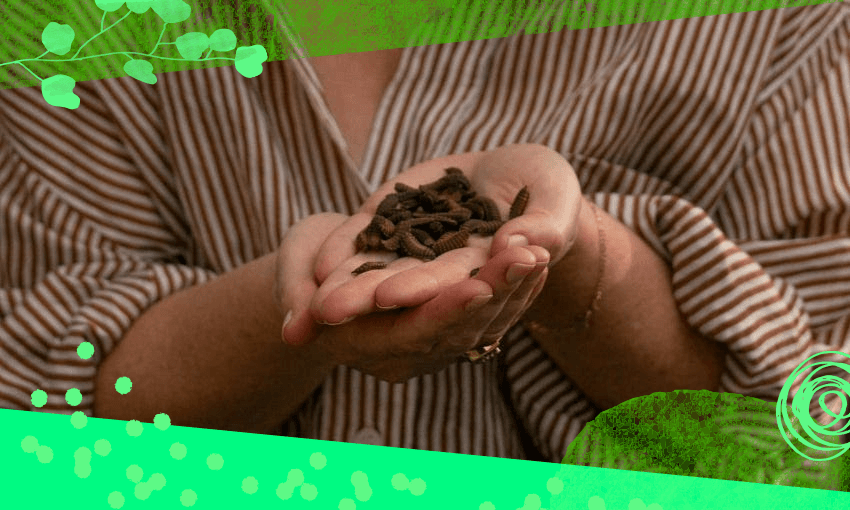These ‘good grubs’ can deliver a climate-solutions double-whammy.
This is an excerpt from our weekly environmental newsletter Future Proof. Sign up here.
“They are known as the piranha of the insect world. They’re incredibly voracious. They eat anything,” says Jessie Stanley, co-founder of Good Grub.
She’s talking about the larvae of the black soldier fly, a non-invasive species found around the world, including in New Zealand. The larvae – grubs which look a bit like slaters – eat “at lightning speed”, converting food waste into value in a cycle that takes just two weeks. (The adult fly form is “not like a gross house fly,” says Stanley. “It is really gentle and shy. You can pick them up and put them on your finger. They’ve got yellow little feet.”)
Stanley is a food technologist. She’s the brains behind the iconic Dessertalicious and co-founder of I Love Pies. Now she’s turning from pies to flies, in part inspired by the “shocking” food waste she’s observed over her career in food. Globally, more than one-third of food we produce is wasted or lost. “It’s really criminal that we’re throwing this valuable resource away,” she says.
At Good Grub, Stanley uses food waste to power “mini livestock factories”. The “livestock” are the grubs, munching through mountains of scraps diverted from landfill. After two weeks, the grubs are harvested to make a protein product for use in pet food and aquafeed – a sustainable alternative to meat-based proteins traditionally used. Even the grubs’ excrement, called frass, is harvested – it’s a biofertiliser packed with “a whole host of goodies” to enrich depleted soils.
In this way, the grubs are delivering an emissions reduction double-whammy. They’re diverting waste that would otherwise release harmful methane emissions in landfill. And they’re introducing a lower carbon protein into the pet food market, which has a substantial environmental pawprint.
“Full disclosure: I’ve tasted the grub. It’s kind of nutty,” says Stanley. Once processed, it looks like a brown protein powder – no different to what you put into your smoothies. It’s a “super protein rich with micronutrients” that are good for gut health and cognitive function, she says. But for now, Good Grub is focusing on making protein to feed animals – and they’re already receiving preorders before production has begun in earnest.
Stanley started out growing a test colony of grubs in her sister’s bathtub. Now, the fledgling Good Grub start-up has a site lined up in Auckland and about half the funding it needs to get things buzzing commercially. With a pitch planned at the Icehouse Ventures showcase in Auckland next week, Stanley is hoping to raise enough capital to take the good grubs “high tech” with an agrirobotics set-up to drive efficiencies. “We have a passionate team, the site, the tech, exciting IP – we just need investment to get this off the ground.”
